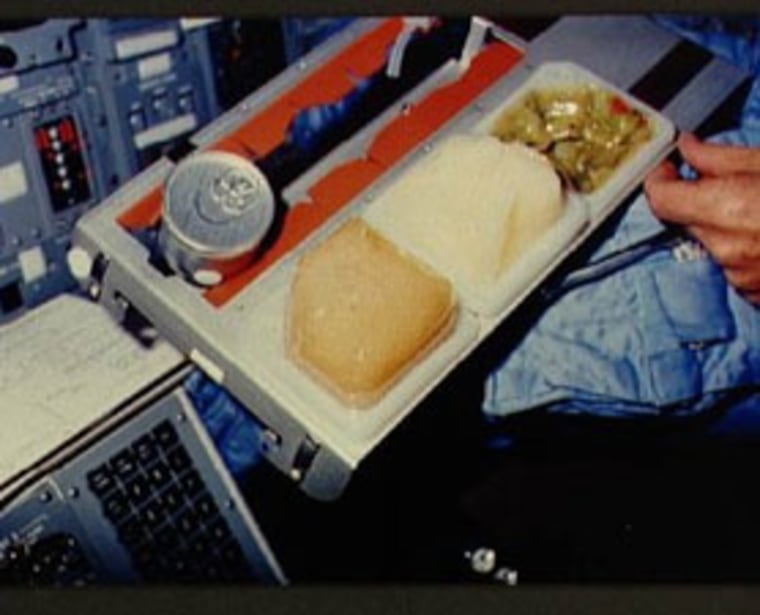Tang? Freeze dried ice cream? Not so fast.
Men and women traveling to Mars will be farmers and gourmet chefs as well as traditional astronauts, according to scientists discussing a manned mission to the Red Planet.
Maintaining food supplies remains one of the greatest challenges faced by Mars mission planners, experts explained at the 242nd National Meeting & Exposition of the American Chemical Society.
Weight, nutrition and variety pose the biggest problems, explained Maya R. Cooper, a senior research scientist in the Space Food Systems Laboratory in NASA's Johnson Space Center in Houston, Tex. For flights on space shuttles and the International Space Station, astronauts get 3.8 pounds of food per day. For a 5-year round-trip mission to Mars, that would mean almost 7,000 pounds of food per person.
"That's a clear impediment to a lot of mission scenarios," Cooper said. "We need new approaches."
One solution under consideration is a high-tech "kitchen garden" that would allow crews to grow healthy food to eat during the long journey while also improving onboard atmosphere by producing oxygen and removing carbon dioxide.
Such plants would require minimal tending and spacecraft real estate. The 10 "prime candidates" currently are lettuce, spinach, carrots, tomatoes, spring onions, radishes, peppers, strawberries, herbs and cabbage.
"Right now, we are looking at the possibility of implementing a bioregenerative system that would involve growing crops in space and possibly shipping some bulk commodities to a Mars habitat as well," Cooper continued. "This scenario involves much more food processing and meal preparation than the current food system developed for the space shuttles and the International Space Station."
Beyond more deeply engaging astronauts in the food process, Cooper also discussed the possibility of having unmanned spacecraft stocked full of long-lasting food and other supplies sent in advance to Mars.
Space food has come a long way since the days of freeze-dried food blocks and squeezing gooey foods out of toothpaste tubes that astronauts ate in the earliest days of spaceflight. By the late 1960s, astronauts for the first time could have hot food and eat their food with a spoon in a special bowl.
Other utensils were introduced in the 1970s with Skylab — the first U.S. space station. These astronauts could choose from 72 different foods, some of which were stored in an on-board refrigerator or freezer — a first for space cuisine.
In recent years, space shuttle astronauts could drink a coffee with their scrambled eggs for breakfast, snack on chocolates or a brownie and choose from chicken al a King, mushroom soup or rice pilaf among other foods for lunch and dinner — just like on Earth. These prepackaged foods take only a few minutes and little effort to prepare.
NASA expects to launch its first manned mission to Mars in the 2030s.
